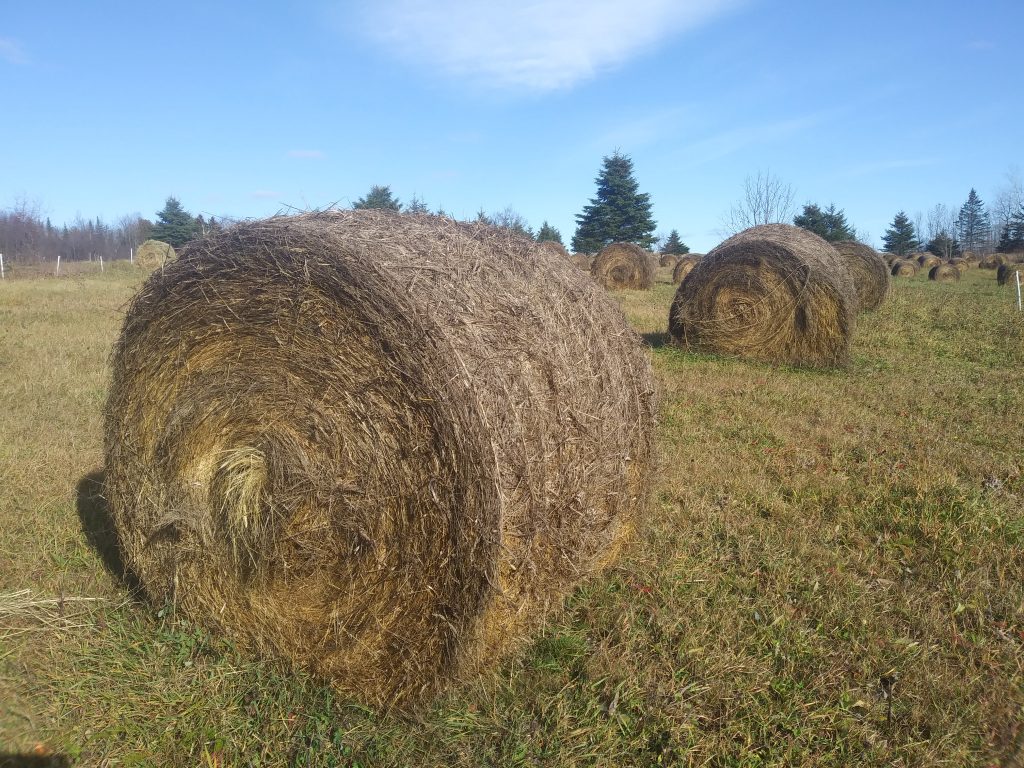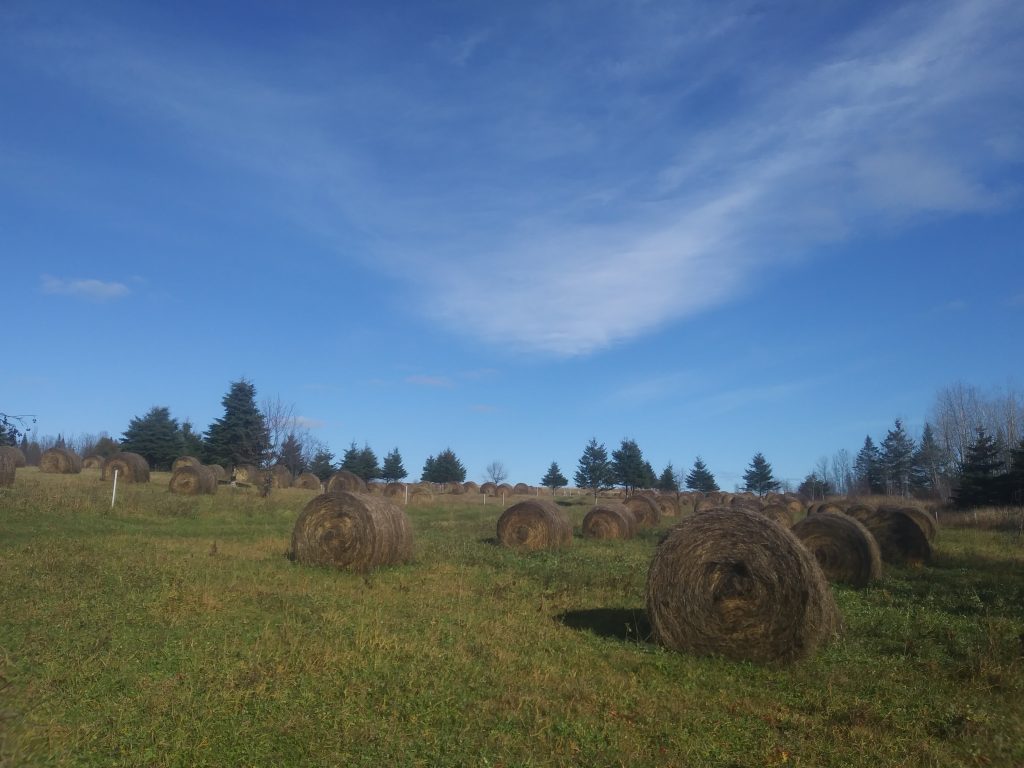
Welcome to the final post in our 3-part blog series on Testing and Measuring the Quality of your Cattle’s Winter Hay. Please be sure to read Part 1 – Why should we care about hay quality? and Part 2 – Testing Hay Quality
In Part 1, we discuss the importance of, and the need for, testing the quality of your cattle’s winter hay. In Part 2, we dive into the methodology of collecting a forage sample. We also introduce Dairy One and their Forage Testing Laboratory, based in Ithaca, New York.
Today, we look into receiving and understanding your forage analysis results. We will also discuss how to apply those results toward your winter feed rationing. We will be focusing specifically on the result components of Dry Matter (DM), Crude Protein (CP) and Total Digestible Nutrition (TDN).
How do you receive your forage analysis results? Dairy One’s Forage Testing Laboratory will send your forage analysis results via email, with the option to also receive copies by fax or mail. I imagine that other Forage Testing Laboratories throughout the country operate in a similar manner.
Your forage analysis results will vary, depending on the forage testing you selected. For each sample submitted, you will receive a forage analysis. If you submitted four samples, you will receive four separate reports. It is very important that you label your samples when submitting them. Be sure to use those same sample names when filling out your Forage Sample Submission Form.
The forage testing is very thorough, testing for a wide-range of nutritional components in each forage sample. For the purposes of this blog series, I am narrowing down our nutritional focus to Crude Protein and Total Digestible Nutrition results, on a Dry Matter basis.
Your forage analysis report will look similar to the one pictured below. Looking at the report, you will see two colums of results. The first column is on an As Fed basis, with the second column on a Dry Matter (DM) basis. When making ration calculations, you want to use the values from the Dry Matter basis. As I discussed in Part 1 of this series, the Dry Matter basis takes into account the moisture content of the forage sample. Each component is presented in terms of a percentage (%). For example, in the Forage Sample #1 Picture, the moisture content is 8.0%. Therefore, Forage Sample #1 is 92% dry matter. All further calculations would need to be made based on this percentage of 92% DM. Looking further down the DM column, we find that CP and TDN values are 6.4% and 59%, respectively. Again, the percentages are different from the As Fed values.

Going back to our hypothetical 1200-pound beef cow example from Part 1 of this blog series. This mature cow is in the pre-calving stage (60-90 days before calving). Her diet should be comprised of approximately 24.4lbs Dry Matter intake/day, with a nutritional break-down of approximately 8.6% Crude Protein and 54.6% Total Digestible Nutrients. (https://www.pubs.ext.vt.edu/400/400-012/400-012.html).
Consider that this cow’s sole forage source is represented by the forage sample analysis in the Forage Sample #1 Picture, below. She requires at a minimum, 8.6% CP, and the forage analysis shows us that her forage has only 6.4% CP. The TDN value is better, at 59%, and meets her TDN requirement of 54.6%. This tells us that she will need a higher amount of dry matter (hay)/day or a protein supplement or some combination of both. What supplement you decide on (e.g., more hay, protein cakes, barley malt sprout tailings, etc) will be individualized to each operation, of course.

Do you have enough hay to feed out more each day, to meet that crude protein requirement? If not, do you have access to supplemental feed that would bridge the crude protein gap?
How do we use the values from our forage analysis report to calculate how much extra supplment may be needed?
Example 1
First, lets start with the hay that was sampled. Let’s figure out how much more of that hay you would need to feed/day to meet your cow’s 8.6% CP requirement.
Our cow requires approx. 24.4lbs of Dry Matter/day. Our forage sample has a dry matter value of 92%.
Equation:
Lbs DM required (24.4) / % DM of the feed (0.92) = 26.5lbs hay/day
Looking at the equation above, we see that our cow will require approx. 26.5lbs hay/day.
As stated earlier, we already know that she will need more crude protein than what will be provided in that 26.5lbs/hay/day. If we want to meet her crude protein needs by the hay alone AND using the same hay that has 6.4% CP, we would need to feed her an additional 8.5lbs hay/day.
How did I get to that value of 8.5lbs? I explain below.
First, we need to calculate how many lbs of Crude Protein is required per day for our cow.
We take our required Dry Matter requirement of 24.4lbs/day * 0.086 (This is the percentage required of Crude Protein)
This gives us a value of 2.1 lbs/day required of Crude Protein.
Next, we need to run the same equation as above but substitute our Crude Protein value from our forage analysis result.
Dry Matter requirement of 24.4lbs/day * 0.064 (This is the percentage of Crude Protein in our forage analysis results).
This gives us a value of 1.56 lbs. This tells us that the hay tested in our forage analysis only contains 1.56 lbs of the 2.1 lbs required of Crude Protein.
Now, we take 2.1 lbs – 1.56 lbs and determine that we need to supplement for an additional 0.54 lbs of Crude Protein per day.
Finally, we take 0.54lbs/0.064 (This is the percentage of Crude Protein in our forage analysis results) and this takes us to our value from above of an additional 8.5 lbs/day required to meet our cow’s Crude Protein needs.
Example 2
Another way to supplement for Crude Protein, besides feeding-out more hay, would be to provide a protein supplement. For us, we favor using barley malt sprout tailings to provide for our cows’ extra protein needs. These tailings contain approx. 20% protein.
We know from Example 1 that our cow will need an additional 0.54 lbs of Crude Protein per day.
Therefore, we can divide:
(additional lbs/day of protein needed) / (percentage of protein in the barley malt sprout tailings supplement)
0.54lbs / 0.20 = 2.7 lbs/day required of barley malt sprout tailings per day to meet our cow’s Crude Proteins needs.
I hope the above information, as well as the previous two posts in this series have proved helpful in assessing the quality and quantity of your cattle’s winter feed.
Thank you for reading along! We appreciate it.
Please be sure to read Part 1 – Why should we care about hay quality? and Part 2 – Testing Hay Quality







